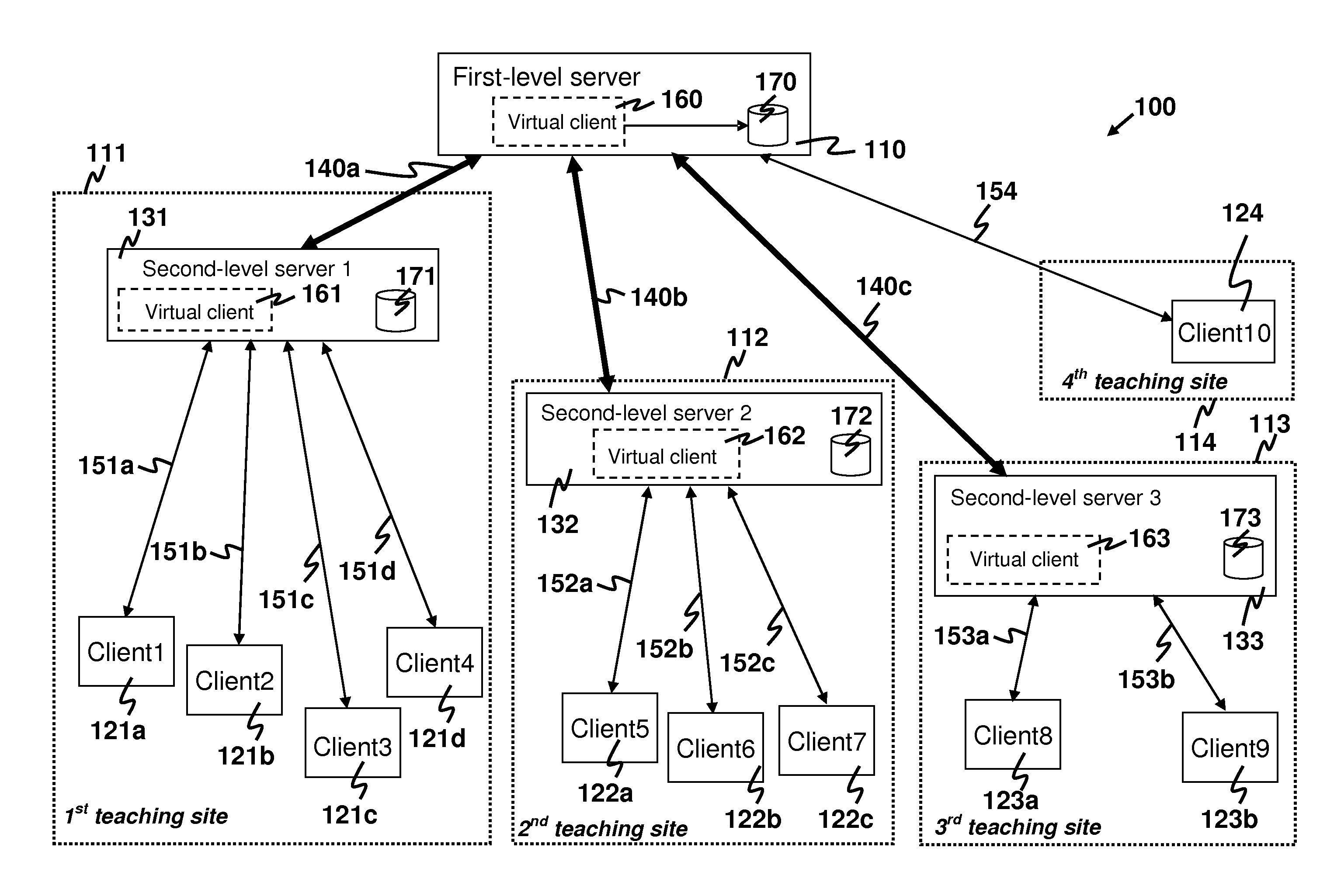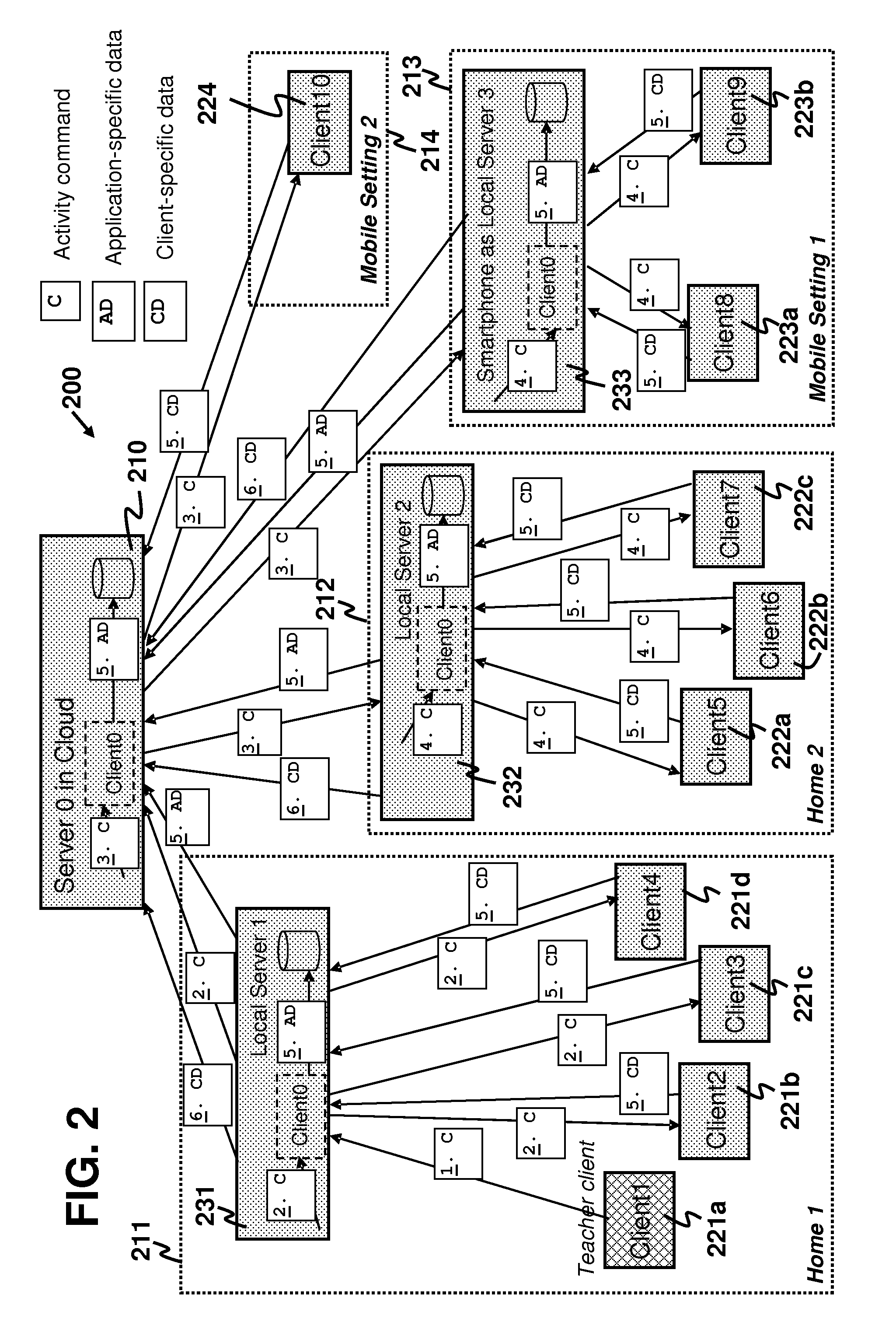Multi-location learning-activity state management for distance education
a learning activity and distance education technology, applied in the field of computer-implementable methods of delivering distance education, can solve problems such as significant loading of the central server
- Summary
- Abstract
- Description
- Claims
- Application Information
AI Technical Summary
Benefits of technology
Problems solved by technology
Method used
Image
Examples
Embodiment Construction
[0015]The following definitions are used herein in the specification and the appended claims. “A cloud” is construed and interpreted in the sense of cloud computing or, synonymously, distributed computing over a network unless otherwise specified. “A server” is interpreted in the sense of computing. The one or more storages may be, for example, hard disks or solid-state disk drives. A server is generally equipped with one or more processors for executing program instructions, and one or more storages for storing data. A server may be a standalone computing server, or a distributed server in the cloud. “A client” is a computing device or a piece of software that accesses a computing server for a service, where the computing device has computing power and generally comprises one or more processors for executing program instructions, and one or more storages for storing data. The client can be a real client or a virtual client. “A real client” means a physical computing device such as ...
PUM
 Login to View More
Login to View More Abstract
Description
Claims
Application Information
 Login to View More
Login to View More - R&D
- Intellectual Property
- Life Sciences
- Materials
- Tech Scout
- Unparalleled Data Quality
- Higher Quality Content
- 60% Fewer Hallucinations
Browse by: Latest US Patents, China's latest patents, Technical Efficacy Thesaurus, Application Domain, Technology Topic, Popular Technical Reports.
© 2025 PatSnap. All rights reserved.Legal|Privacy policy|Modern Slavery Act Transparency Statement|Sitemap|About US| Contact US: help@patsnap.com



